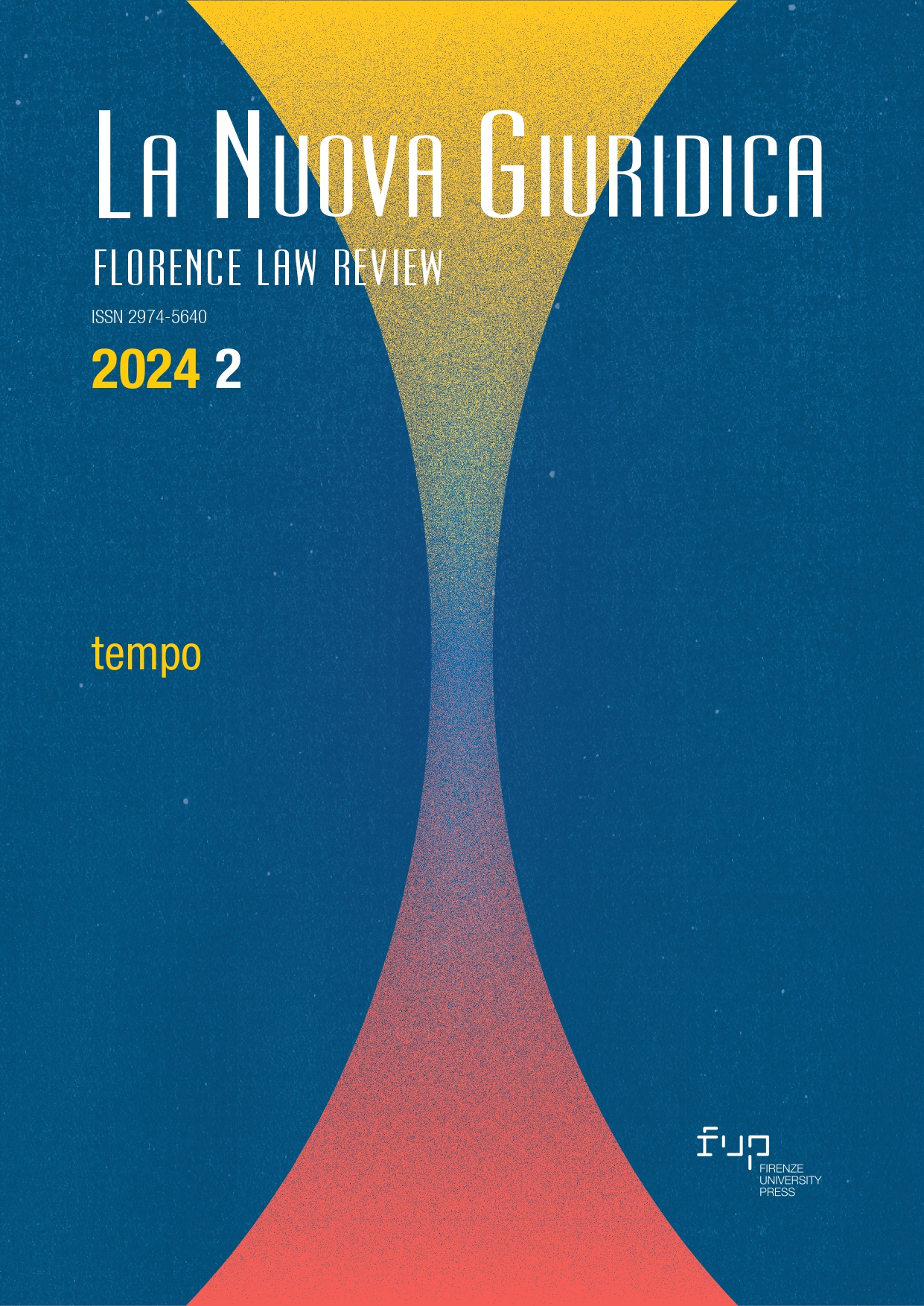Published 2025-03-17
Keywords
- tempo,
- crisi,
- impresa
Copyright (c) 2025 Ilaria Pagni

This work is licensed under a Creative Commons Attribution 4.0 International License.
Abstract
Attraverso il filo conduttore del “tempo” si comprendono meglio anche le scelte compiute dal legislatore nel disciplinare la crisi dell’impresa, nella consapevolezza che solo imprimendo tempi rapidi alla reazione dell’impresa in crisi e alla risposta, stragiudiziale o giudiziale, dell’ordinamento si può tentare di salvaguardare contemporaneamente, nei limiti del possibile, la posizione del debitore, dei creditori e di tutti coloro che sono interessati alla sistemazione della crisi. Il tempo è centrale rispetto ai primi segnali di crisi, se si vuole evitare che questa si aggravi, e diventi dissesto. Ma è centrale anche nella durata delle misure protettive, perché il divieto per i creditori di agire, esecutivamente o nelle forme cautelari, contrasta col diritto d’azione, e nei procedimenti, che si devono concludere rapidamente perché solo la velocità della risposta giudiziale assicura l’effettività della tutela. Lo scritto analizza così i diversi momenti nei quali il tempo assume importanza e cerca di mostrare come una cultura moderna del recupero dell’impresa in crisi passi attraverso la consapevolezza dell'essenzialità di quel fattore, fondamentale ad evitare il pregiudizio per la tutela dei creditori e di tutte le parti interessate al processo di ristrutturazione.
Through the leitmotif of ‘time’ one can also better understand the choices made by the legislator in regulating the crisis of the enterprise, in the awareness that only by imparting rapidity to the reaction of the enterprise in crisis and to the response, out-of-court or judicial, of the legal system can one attempt to simultaneously safeguard, as far as possible, the position of the debtor, the creditors and all those interested in the settlement of the crisis. Time is central with respect to the first signs of a crisis, if one wants to prevent it from worsening and becoming insolvency. But it is also central with respect to the duration of protective measures, because the prohibition of creditors to act, either executively or in precautionary forms, conflicts with the right of action, and in proceedings, which must be concluded rapidly because only the speed of the judicial response ensures the effectiveness of protection. The paper thus analyses the various moments in which time assumes importance and seeks to show how a modern culture of the recovery of a company in crisis passes through an awareness of the essentiality of that factor, which is fundamental to avoid prejudice for the protection of creditors and all parties involved in the restructuring process.

